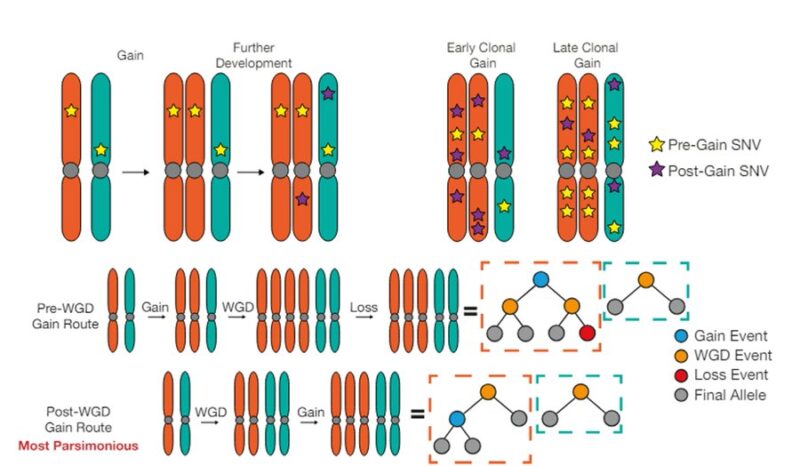Whijae Roh, Senior Computational Biologist at Pfizer, shared a post by Elizabeth McKenna, on X:
“The history of chromosomal instability in genome doubled tumors
‘Here, we describe GRITIC, a generic method for timing genomic gains leading to complex copy number states, using single-sample bulk whole-genome sequencing data. By applying GRITIC to 6,091 tumors, we found that non-parsimonious evolution is frequent in the formation of complex copy number states in genome-doubled tumors.
We measured chromosomal instability before and after genome duplication in human tumors and found that late genome doubling was followed by an increase in the rate of copy number gain.
Copy number gains often accumulate as punctuated bursts, commonly after genome doubling. In summary, GRITIC is a novel copy number gain timing framework that permits the analysis of copy number evolution in chromosomally unstable tumors.'”
Quoting Elizabeth McKenna‘s post:
“Now online in Cancer Discovery: The History of Chromosomal Instability in Genome Doubled Tumors – by Toby Baker, Maxime Tarabichi, Peter Van Loo and colleagues.”

Read further.
Source: Whijae Roh/X and Elizabeth McKenna/X
